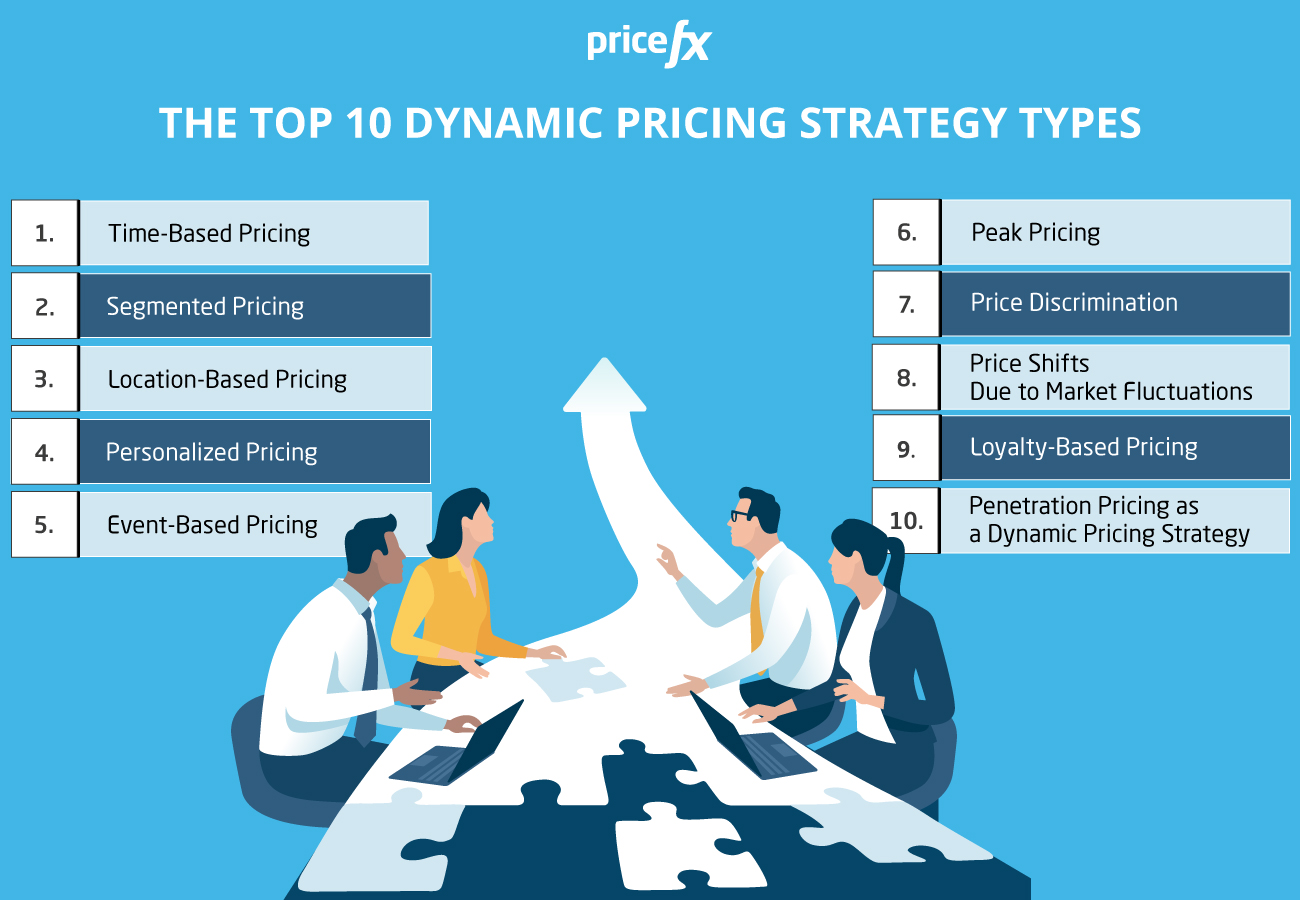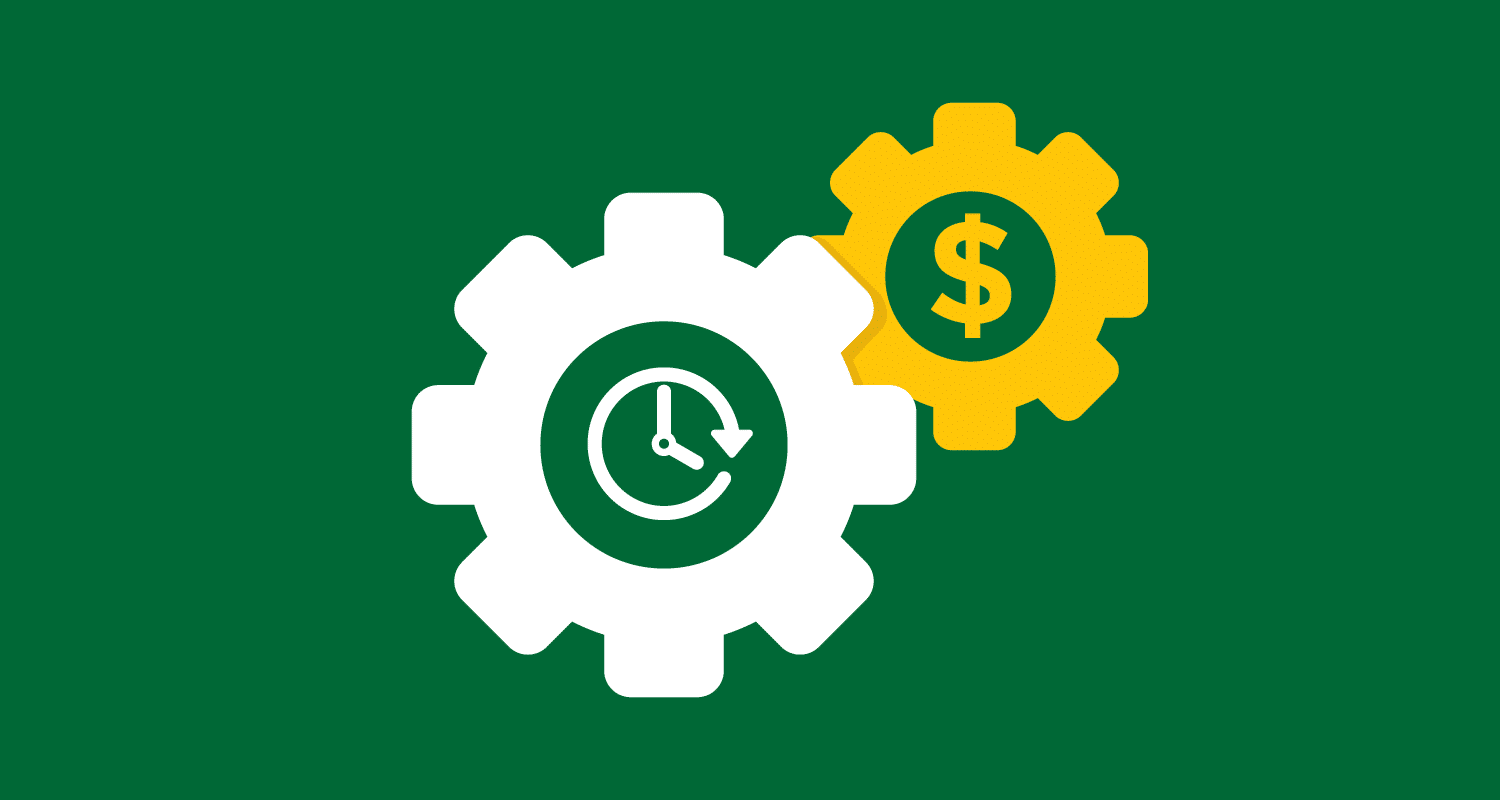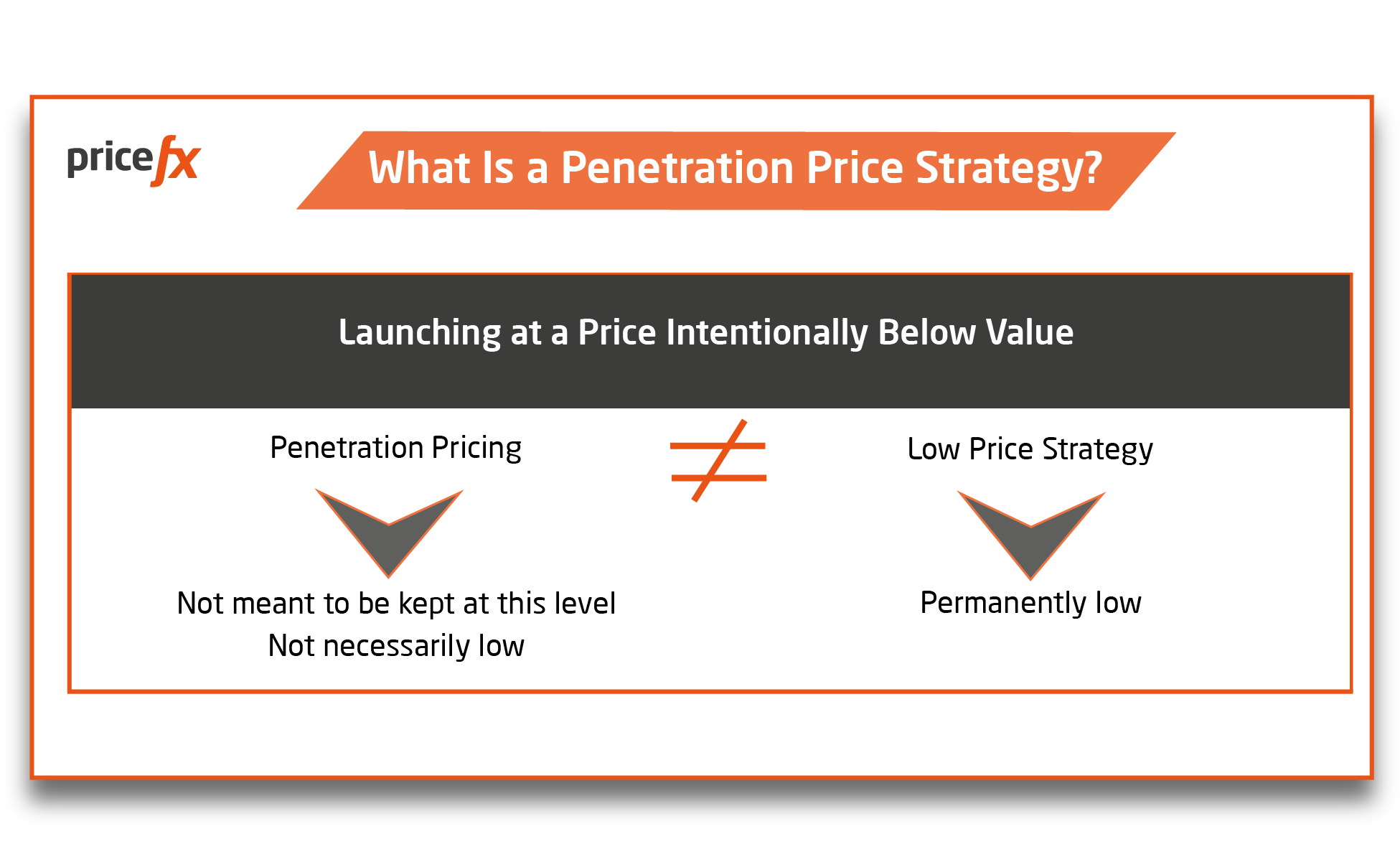Dynamic Pricing Strategy Types – The Top 10 with Examples
November 20th, 2023 | 9 min. read
Dynamic pricing strategies have revolutionized the way businesses approach pricing enabling them to adapt prices in real-time based on market demand, customer behavior, and other relevant factors. Dynamic pricing is a flexible strategy where prices continuously adapt to real-time supply and demand. Online retailers are masters of this approach, effortlessly changing prices to optimize sales. Because dynamic pricing can be based on a range of factors, then naturally several dynamic pricing strategy types have evolved.
When customers visit a retail store, whether online or offline, they expect to see clear prices. But for professionals like doctors, lawyers, and plumbers, setting exact prices can be complex. It is also
At Pricefx, we have worked with numerous clients worldwide, using our price optimization technology to enhance profitability and efficiency. We collaborate with businesses of all types from all manner of industries to create tailored pricing strategies aligned with their objectives. Determining your business goals is the crucial first step in the pricing strategy puzzle. Whether it is selling off inventory, maximizing profits, or boosting revenue and production, your objectives shape the pricing strategies you implement. Let us help you unlock your business potential and achieve your customized goals.
So, let’s jump straight into looking at the Top 10 types of dynamic pricing strategies and how they are used in everyday business applications.
The Top 10 Dynamic Pricing Strategy Types

Join us below for an exploration into the top 10 most common dynamic pricing strategies and provide real-world examples to illustrate their effectiveness.
By understanding these strategies and their applications, businesses can leverage dynamic pricing to optimize revenue, improve customer satisfaction, and gain a competitive edge.
1. Time-Based Pricing
Time-based pricing involves adjusting prices based on specific time periods, such as peak hours, seasons, or weekdays versus weekends. This strategy allows businesses to capitalize on variations in demand and adjust prices accordingly.

For example, airlines often implement higher prices during peak travel seasons or on weekends when demand is typically higher. On the other hand, hotels may offer lower rates for midweek stays to attract more customers during slower periods.
2. Segmented Pricing
This strategy involves setting different prices for identical products, despite having the same production and distribution costs. In industries like manufacturing and distribution, this approach is evident. For instance, a company may offer tiered pricing for its products, catering to different customer segments with varying needs and preferences.
Consider a manufacturing company that produces industrial equipment. They may offer different pricing tiers based on customer requirements, such as warranty coverage, additional services, or customization options. Customers who prioritize premium features and personalized solutions are willing to pay a higher price for the added value they receive.
By implementing segmented pricing, businesses can effectively cater to diverse customer segments, accommodating their unique preferences and willingness to pay. This strategy enables companies to maximize their revenue potential while delivering tailored solutions to different market segments.
3. Location-Based Pricing
Location-based pricing considers the geographical location of customers and adjusts prices accordingly. This strategy considers regional preferences, economic factors, and purchasing power. For instance, movie theaters may offer lower ticket prices in less affluent neighborhoods to accommodate the purchasing power of the local population.

By adjusting prices based on location, companies can attract niche customers who highly value their product or service in that region.
For example, a distribution company specializing in the delivery of organic and vegan food products may charge slightly higher prices in affluent neighborhoods where health-conscious consumers are more prevalent.
4. Personalized Pricing
Personalized pricing tailors prices to individual customers based on their preferences, purchase history, or demographic information. Online retailers often utilize this strategy by offering dynamic discounts or personalized coupons to specific customer segments. For example, a retail e-commerce platform might send targeted promotional offers to customers who have previously expressed interest in certain products, or bundle other related products frequently purchased in combination as a package increasing the likelihood of conversion and maximizing revenue on each deal.
5. Event-Based Pricing
Event-based pricing involves adjusting prices based on specific events or occasions. This strategy takes advantage of the increased demand associated with events such as concerts, sports games, or festivals. For example, ticket prices for a popular music concert may increase as the event date approaches, reflecting the higher demand from fans eager to secure their spot. Event-based pricing allows businesses to capture the maximum value of a limited-time opportunity.
6. Peak Pricing
Closely related to event-based pricing and time-based pricing is peak pricing. As the name implies, peak pricing is a pricing strategy closely tied to high-demand periods, whether it is certain hours of the day or specific seasons. It operates on the principle that during peak times, when choices are limited and competition is scarce, prices can be set higher. A classic example of peak pricing is observed in the hotel industry, where room rates skyrocket during popular seasons compared to off-peak periods. This strategy capitalizes on the imbalance between supply and demand, allowing businesses to maximize their profits during periods of heightened customer interest.
A strategy driven by high demand; peak pricing is not limited to the hospitality industry. Even in the chemical industry, this pricing approach finds its application. For instance, consider a specialty chemical used in the production of paints. During the summer months, when construction activity and demand for paints are at their peak, suppliers may implement peak pricing to take advantage of the increased market demand. As a result, the price of the specialty chemical may rise during this period, aligning with the heightened demand and limited availability of alternatives. This enables chemical companies to optimize their revenue and capitalize on the seasonal fluctuations in the market.
7. Price Discrimination
Price discrimination involves setting different prices for the same product on different channels or for different customer segments. There are three degrees of price discrimination:
- First-degree price discrimination: This strategy involves charging the maximum price for each product based on the specific channel or customer segment. It ensures that customers pay the highest possible price based on their willingness to pay.
- Second-degree price discrimination: In this case, the pricing takes quantity into account. Bulk purchases are offered at a lower price per unit, encouraging customers to buy more and potentially increasing overall sales.
- Third-degree price discrimination: This strategy is based on individual consumer characteristics. Examples include offering discounts for specific groups such as seniors, students, or hosting ladies’ nights. It aims to attract different customer segments with tailored pricing.
Implementing price discrimination requires careful consideration. It should bring direct benefits to both customers and the business. Furthermore, transparency and justification of pricing decisions are essential to maintain customer trust.
8. Price Shifts Due to Market Fluctuations
Markets are susceptible to sudden shifts caused by unforeseen events like pandemics or conflicts. These unexpected market fluctuations can lead to product shortages or rapid changes in demand.
The past 3 years have demonstrated the unpredictability and volatility of market conditions, particularly with the global pandemic. Businesses have witnessed how unforeseen events can drastically impact market dynamics and pricing strategies.
9. Loyalty-Based Pricing
Loyalty-based pricing aims to reward loyal customers by offering them exclusive pricing benefits or discounts. This strategy encourages customer retention and strengthens brand loyalty.

For instance, retail stores often have loyalty programs where members receive exclusive discounts or access to promotional pricing. By providing preferential pricing to loyal customers, businesses not only retain their existing customer base but also incentivize repeat purchases and word-of-mouth referrals.
10. Penetration Pricing as a Dynamic Pricing Strategy
Penetration pricing is a dynamic pricing strategy employed by new companies aiming to quickly gain a significant market share. It involves setting an initially low introductory price to attract customers and establish a strong presence. Established companies may also adopt this strategy when launching new products to capture market share.

For instance, in the chemical industry, a new company introducing a specialized chemical compound may use penetration pricing to encourage potential buyers to try their product. By offering an attractive introductory price, they entice customers to make the switch from existing suppliers.
Penetration pricing is a dynamic strategy because it leverages the concept of pricing flexibility. As market conditions and competition evolve, companies can adjust their prices to maintain competitiveness and maximize their market penetration.
Implementing an Effective Dynamic Pricing Strategy
Having explored the nuances of dynamic pricing strategy types and their potential benefits for your business, consider taking these steps before implementing a strategy shift. Check off these steps to ensure a successful strategy transformation:
- Define Clear Business Goals: Before implementing your chosen dynamic pricing variant, identify the specific objectives your business aims to achieve. Having clear goals will help you align your pricing strategy with your overall business strategy.
- Analyze Competitors: Research your direct competitors to determine if they are already using dynamic pricing and which type/s. Understanding their pricing strategies will enable you to make informed decisions and stay competitive in the market.
- Communicate with Your Team: Inform your staff about any planned changes to your pricing strategy. Collaborate with your salespeople to gather valuable customer feedback on pricing. Their insights can provide valuable guidance in making pricing decisions.
- Select the Right Strategy (For You): Explore different dynamic pricing methods and carefully choose the products or services that are best suited for price adjustments for your unique circumstances. Start with a small selection and expand gradually based on the outcomes you observe.
- Leverage AI-powered Pricing Software: Managing dynamic pricing manually for many products is challenging. Consider implementing AI-informed pricing software, such as the solution offered by Pricefx. These advanced tools can optimize your pricing across various channels, considering factors like shopping history, competitor pricing, sales volumes, and supplier pricing.
To dive deeper into customizing dynamic pricing strategy and most importantly, aligning your sales team with your chosen strategy, check out the article below to explore three ways to align your pricing strategy with sales execution, engage your sales team with modern data-informed pricing guidance, and drive your organization’s bottom line:
Happy Pricing!
